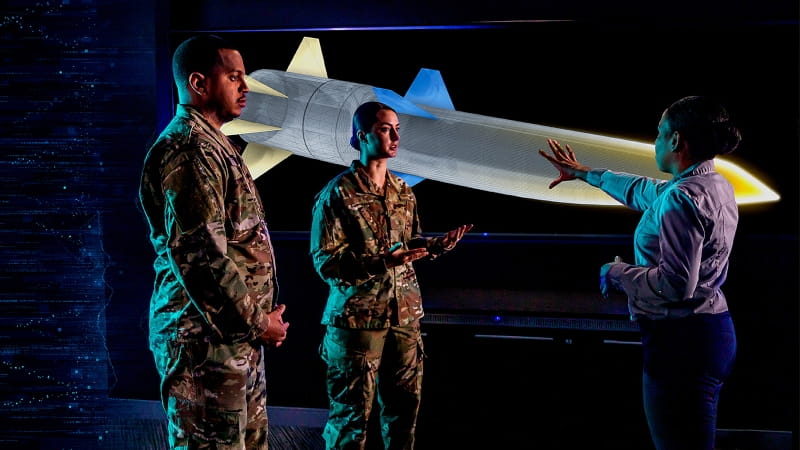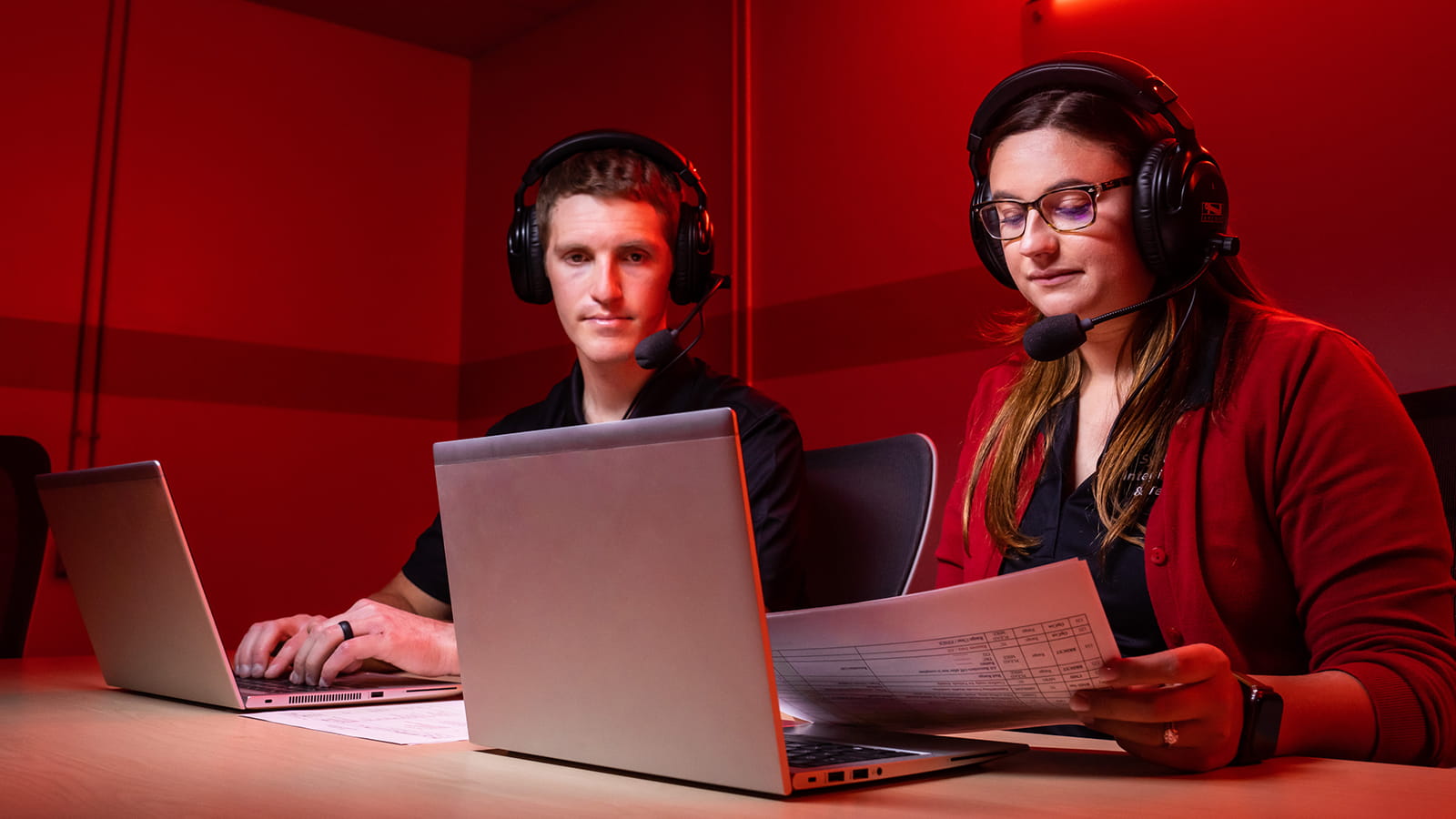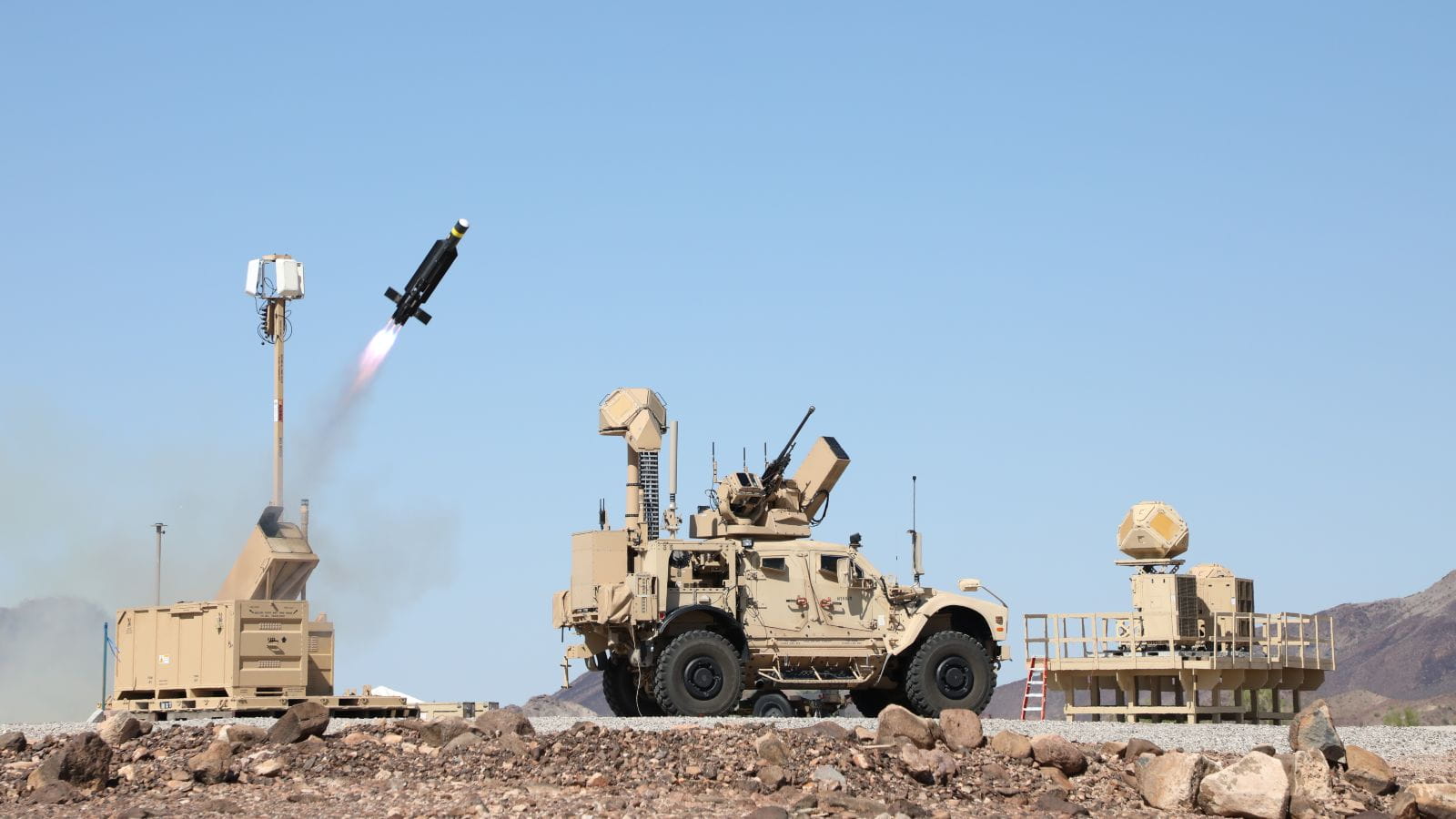What it’s like to design and launch a hypersonic missile
Two early-career engineers offer up-close look at their roles in the historic HAWC missile test
“After hundreds of launch rehearsals leading up to the flight test, we were really well-versed. We had the countdown memorized,” Maddalena said.
The pair, both still early in their careers, was part of an engineering team that developed and successfully test-fired the first demonstrator of a hypersonic air-breathing cruise missile. That system, known as the Hypersonic Air-breathing Weapon Concept, or HAWC, missile, flies at more than five times the speed of sound – so fast it relies on cutting-edge advancements in manufacturing technologies and design solutions to make it work. Developed in partnership with the U.S. Defense Advanced Research Projects Agency, U.S. Air Force and Northrop Grumman, it is a cornerstone of the U.S. Department of Defense’s strategy to strengthen its hypersonic strike capability. The successful test marked an important milestone in the development of a near-term long-range hypersonic system.
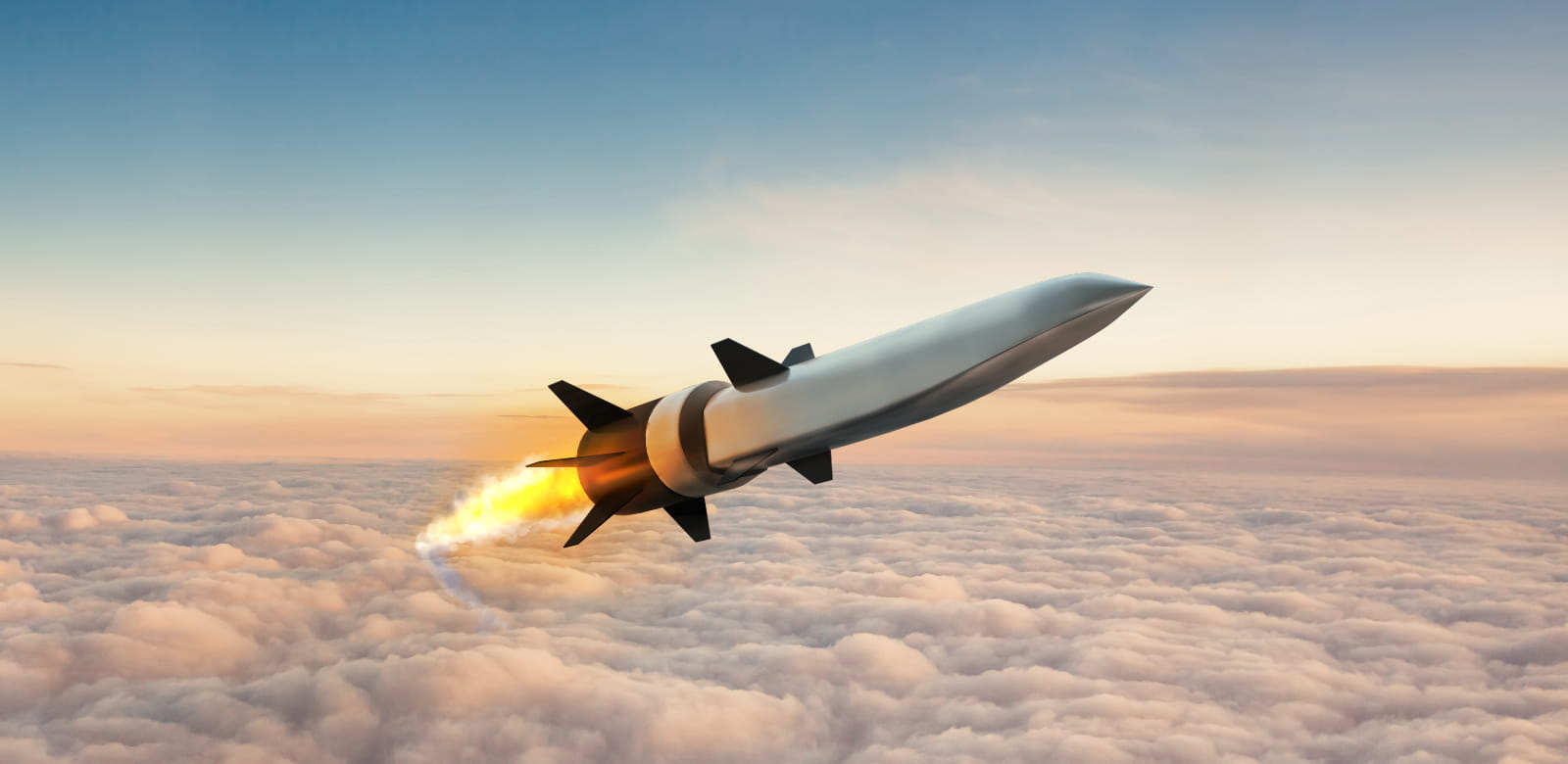
This artist’s rendering shows the Hypersonic Air-breathing Weapon Concept, which integrates RTX’s air-breathing hypersonic weapons with scramjet combustors from Northrop Grumman.
Raytheon continues to be a technology and innovation trailblazer because of engineers like Giovannucci and Maddalena, who share a high intellect and passion for defense.
Giovannucci’s experience working on the StormBreaker smart weapon combined with his knowledge of hypersonics and ability to solve problems on the fly, led to his lead role on the HAWC program.
“The team was very small and I was involved from the beginning, so it gave me a chance to blaze the way,” said Giovannucci, who started his career at Raytheon after earning a mechanical engineering degree.
A hands-on effort
Giovannucci and Maddalena knew the HAWC missile well, having worked on every step of its development.
“Nick managed many of the procedures and test plans, and we, as the engineers, would then build the missiles and execute the procedures,” Maddalena said.
In between, there were launch rehearsals and all kinds of tests – a hot-battery test to verify the missile’s electrical and power system could support a launch timeline on the ground before flight testing, and a captive-carry test to integrate the system with the range and other assets required for the launch. All were important steps in preparing for the actual flight tests.
And right before the test, they themselves loaded the missile onto the aircraft and ran ground checks to monitor how the system was performing. That was unusual; typically, the people who write the test plans aren’t the same as those who actually conduct the test.
“It’s one of those experiences that most people don’t get their entire career,” said Maddalena, who always wanted to work in aerospace and defense, so she studied aeronautics and became a pilot.

Kealey Maddalena and Nick Giovannucci are early-career engineers at Raytheon.
With hundreds of rehearsals behind them, it was now time for the real thing. On the day of the test, they boarded an aircraft carrying the HAWC missile and began the journey out to the test range.
They sat beside one another, just as they had in the hangar, only now they weren’t calling each other by name. Giovannucci was RMD-1, Maddalena RMD-2 – call signs, just like the ones fighter pilots use.
“It was my childhood dream to be an astronaut or fighter pilot. This is the next best thing,” Maddalena said.
The test starts with a couple of “cold passes,” or practice runs where they walked through the steps of the test, in lockstep with the control room on the ground. Then they climb toward a “hot pass” – the actual launch of the weapon. Flying above the range, they awaited an “all clear” message from the ground, cueing them to launch.
Maddalena monitored the “health” of the missile in real time. And Giovannucci began the countdown sequence, applied power at the prescribed moment and pressed “launch,” when prompted by the test director and range test conductor located in the control room.
The missile separated cleanly from the aircraft, and Maddalena made the “missile away” call, letting the ground crew know the launch worked.
Together they watched as the booster lit, then flew away.
The test was a success, the mission complete.
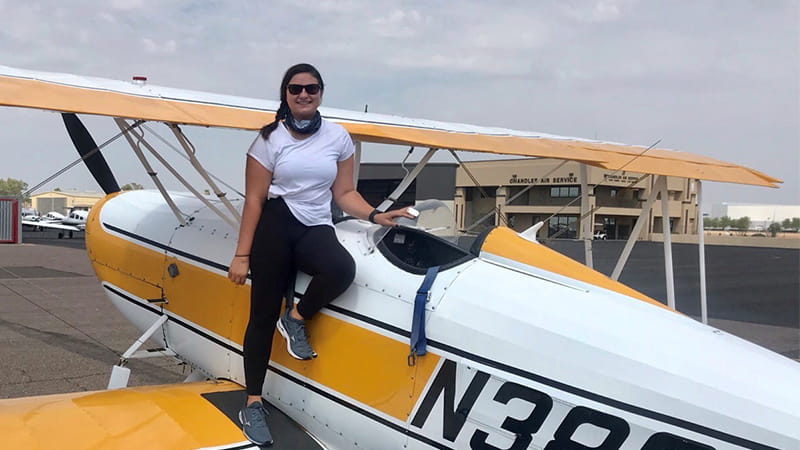
In her spare time, Kealey Maddalena flies a Great Lakes Biplane while doing Aerobatic Flight Training in Chandler, Arizona. Maddalena’s aviation background helped her land a key role in the HAWC missile program.
